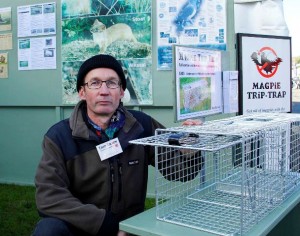New pest traps unveiled at Fieldays
Neil Blaymires from Trip Traps has added cat, rat and duck traps to his collection of pest trapping mechanisms. Matthew Robinson finds out how the traps work.
Neale Blaymires unveiled his first magpie trap at the Fieldays in 1997 and now has added cat, rat and duck/pukeko traps.

A member of Forest and Bird, Blaymires of Trip Traps invented the magpie traps to keep the bird from displacing the native wood pigeon from his property near Te Puke.
“They are quite territorial and just irritating,” said Blaymires.
The magpies can be lured into the trap with any fatty food such as beef dripping.
Once there, they step on the trigger and the trap closes.
“Their stomach is bigger than their brains.”
Opening the top of the trap and wringing its neck then kills the magpie.
The killing has to happen where the other birds cannot see so birds don’t become trap shy.
The cat trap has the same components as the magpie trap but they are instead lured in with smoked fish or chicken.
Wild cats are a major threat to native birds especially the wood pigeon.
They are then killed with a high-powered air rifle shot to the head.
Pukeko, a protected native species, can be trapped if permission is granted by Department of Conversation and a case is presented that they are causing economic damage.
The rat trap was developed for the Otanewainuku Kiwi Trust between Tauranga and Rotorua and is the only trap that kills on its own.
The price of the traps reflects the quality New Zealand build and design compared to cheaper Chinese imports.
“There are a lot of cheap and nasty traps coming in from China. I’ve developed a high quality product and I charge a premium for that,” says Blaymires.




